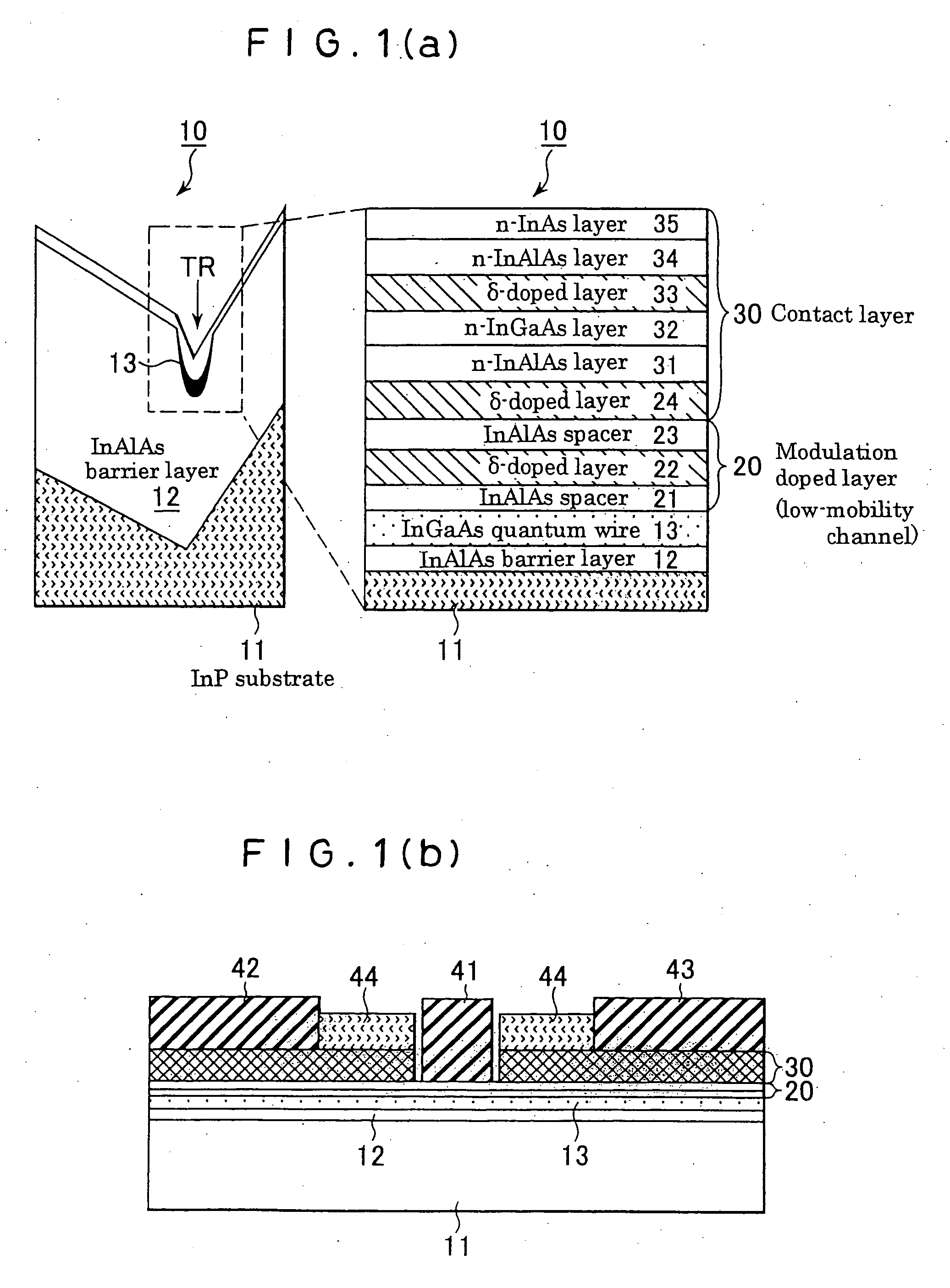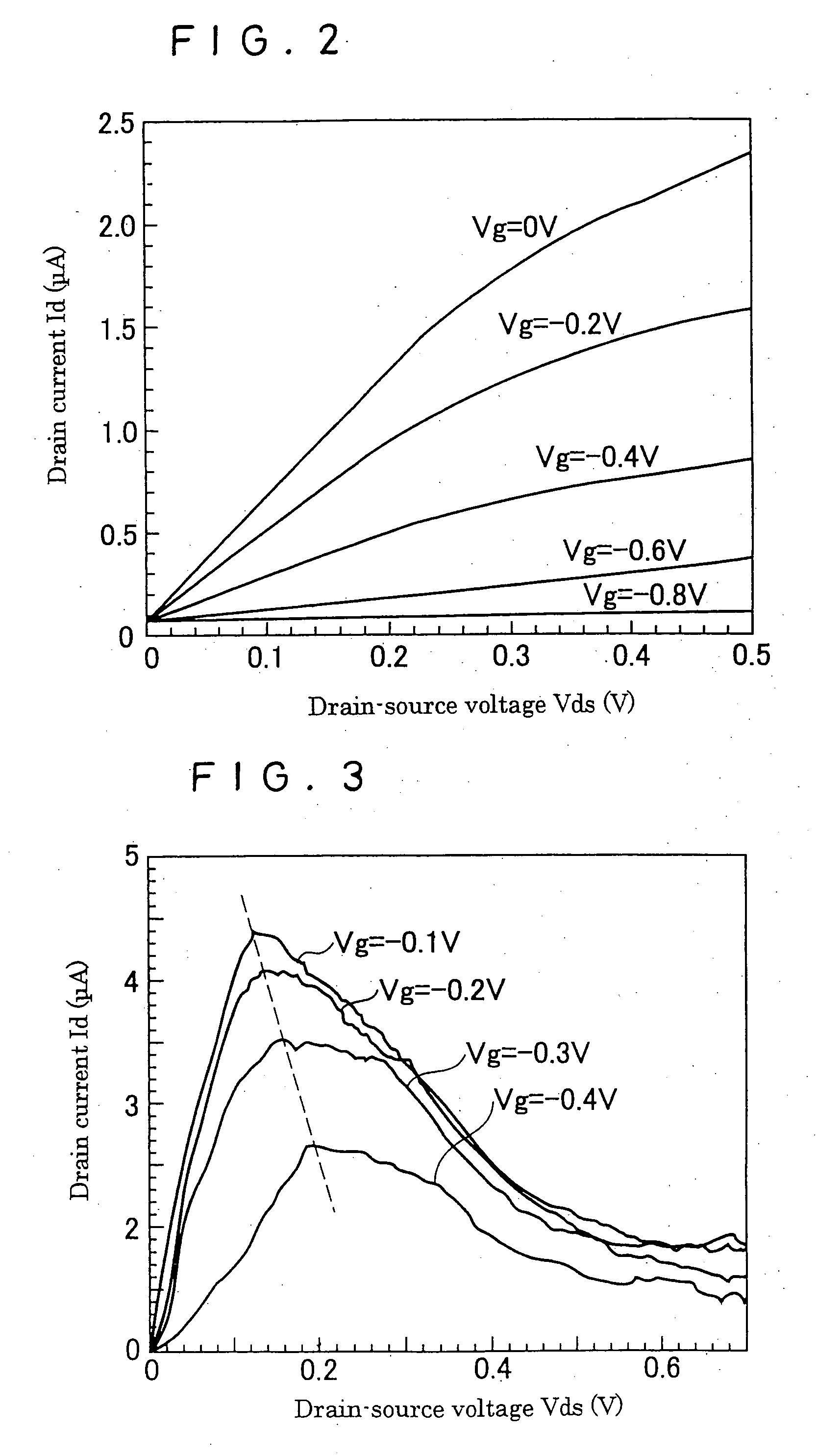Negative resistance field-effect element
a field-effect element and negative resistance technology, applied in the field of field-effect elements, can solve the problems of unsuitable logic element and integrated element application, lack of control terminal itself, and inability to anticipate amplification capability or the lik
- Summary
- Abstract
- Description
- Claims
- Application Information
AI Technical Summary
Problems solved by technology
Method used
Image
Examples
Embodiment Construction
[0017] A preferred embodiment of a negative resistance field-effect element 10 configured according to the present invention is shown in FIGS. 1(A) and (B). As viewed statically from the sectional structure shown in the left-side diagram of FIG. 1(A), an InAlAs or AlGaAs barrier layer, in this case an InAlAs barrier layer 12, is formed on an InP or GaAs substrate, in the illustrated case an InP substrate 11, having an asymmetrical V-groove, thereby forming a trench TR that is a deep V-groove having very steep lateral faces at the location of the InAlAs barrier layer 12 where the V-groove is present in the underlying InP substrate 11. The distance between the inclined surfaces near the bottom portion of the trench TR (space width) can, as explained later, be formed very narrowly.
[0018] Details of the sectional lamination at the essential portion enclosed by the phantom line in the left-side diagram are shown in the right-side diagram of FIG. 1(A). Referring to this, first an InGaAs ...
PUM
 Login to View More
Login to View More Abstract
Description
Claims
Application Information
 Login to View More
Login to View More - R&D
- Intellectual Property
- Life Sciences
- Materials
- Tech Scout
- Unparalleled Data Quality
- Higher Quality Content
- 60% Fewer Hallucinations
Browse by: Latest US Patents, China's latest patents, Technical Efficacy Thesaurus, Application Domain, Technology Topic, Popular Technical Reports.
© 2025 PatSnap. All rights reserved.Legal|Privacy policy|Modern Slavery Act Transparency Statement|Sitemap|About US| Contact US: help@patsnap.com



